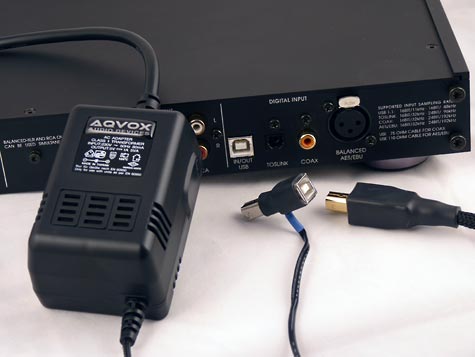Topic: Surprise Surprise - Babyface goes Class Compliant! (Update 12/10/2012)
When the Babyface has been developed, Class Compliant mode or the usage as iPad companion was not on our Radar yet. That changed with the introduction of the CC mode for the UCX (see extra Tech Info). Now there were two problems:
1. The Babyface features automatic power on/off for the external power socket, steered by the presence of USB power. As the iPad delivers only around 20 mA, the external power will not get activated, and the one from the iPad is far too low to operate the Babyface (500 mA needed). In stand-alone mode, the unit simply doesn’t start at all.
2. Even worse: the Babyface has no internal memory that would allow it to boot into a specific state. It needs to be set by the driver and TotalMix FX from the computer to work correctly. No way to boot into a stand-alone mode, or a Class Compliant mode, and no way to store the settings that you just used in these modes.
There is a workaround for problem 1, and the magic formula for CC-operation is do-it-in-the-right-order. The first version of this post was based on always plugging the USB cable into the CCK which was already connected to the iPad. We had to learn that all you have to do is to change this order to first connect the CCK with the Babyface, then plug it into the iPad – and the Babyface will start without error message on the iPad. The long version: Connect Babyface to an external power supply, connect the USB cable to the BF, connect the CCK to this USB cable, then plug the CCK into the iPad.
For stand-alone mode use USB bus power instead of the external power supply. Simply plug the USB cable into any suitable USB power supply (like the charger for iPhone or iPad).
Ok, power problem solved. So what about the memory? The RME magicians had a vague idea: thanks to enough resources in the FPGA it might be possible to add a small processor, which then uses the existing flash memory (for the firmware) to store all the needed information in it – in realtime, and for booting. And after many months of developing HeadScratch ed: – it works :-)
Since firmware 200 the Babyface operates in three different modes: driver-based USB 2, stand-alone mode, and Class Compliant mode. The latter describes a standard that is natively supported by operating systems like Windows, Mac OSX and Linux. No proprietary drivers are required, the device will be directly recognized when CC mode is activated. Obviously, native features will be limited in comparison to those provided by the RME driver set. For example there will be no (Total) Mix and no effects.
The Class Compliant mode can be activated and deactivated by holding down the Select and Recall button while powering up the Babyface. The level meters will run up, confirming CC mode.
The Babyface provides the iPad with the professional analog I/O connections it lacks. Superb microphone preamps, in addition to professional balanced line outputs, and a hi-power headphone output that also excels with high impedance headphones. Plus gain and level adjustments, SPDIF and ADAT input and output, at up to 96 kHz and 24 bit (limited by the current iOS, 192 kHz already supported by the Babyface). And of course a Sysex-capable MIDI I/O.
Note that since iOS 5 multichannel recording is supported, and since iOS 6 multichannel playback as well. At this time only djay from Algoriddim supports more than one stereo output, but others like Auria are expected to follow soon.
All further information is found in the pdfs (german and english) that can be downloaded here:
https://archiv.rme-audio.de/download/cc … face_e.pdf
https://archiv.rme-audio.de/download/cc … face_d.pdf
!!!Third update 12/10/2012: firmware released, V 203!!!
https://archiv.rme-audio.de/download/fut_usb_win.zip
https://archiv.rme-audio.de/download/fut_usb_mac.zip
Have fun!
Matthias Carstens
RME

